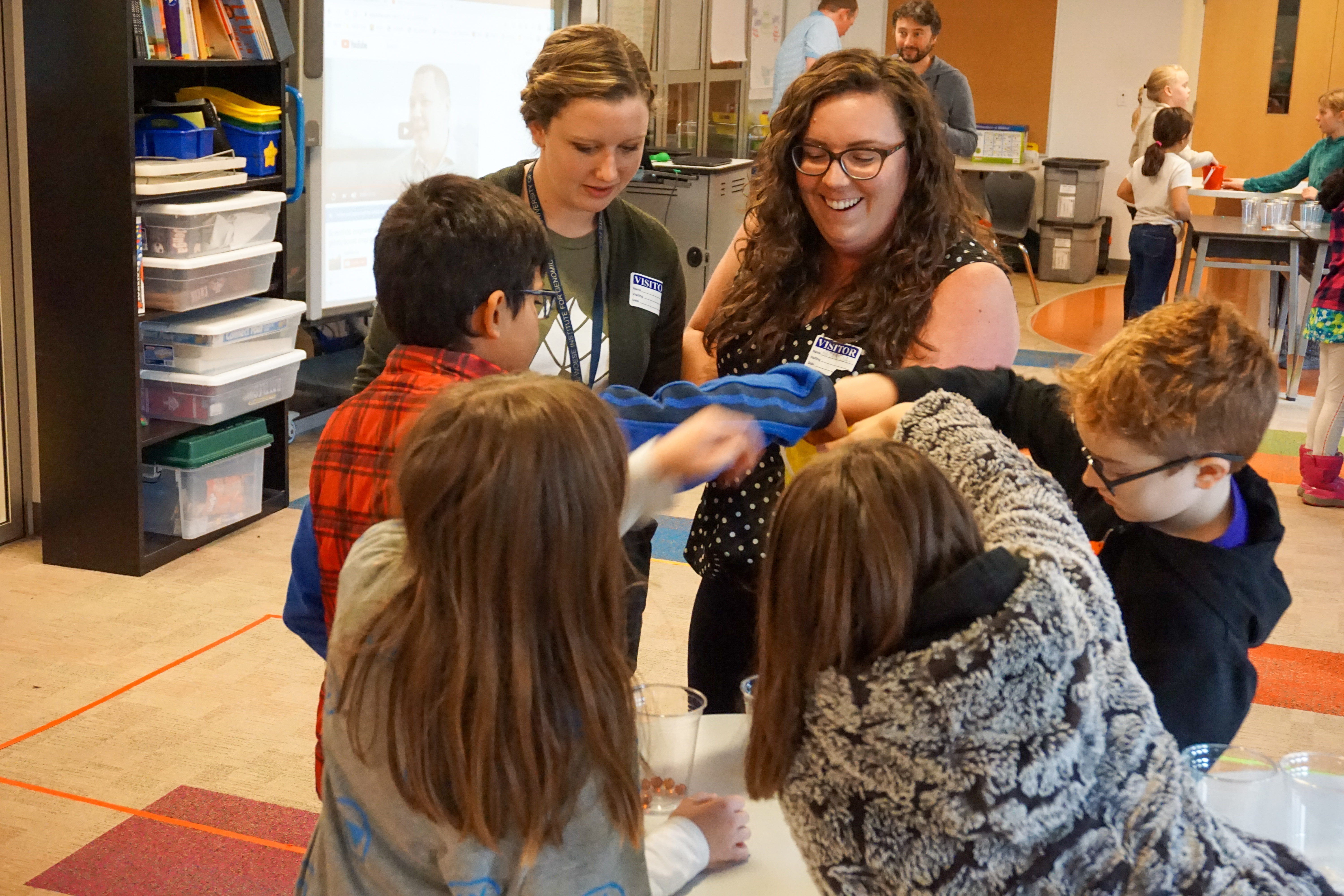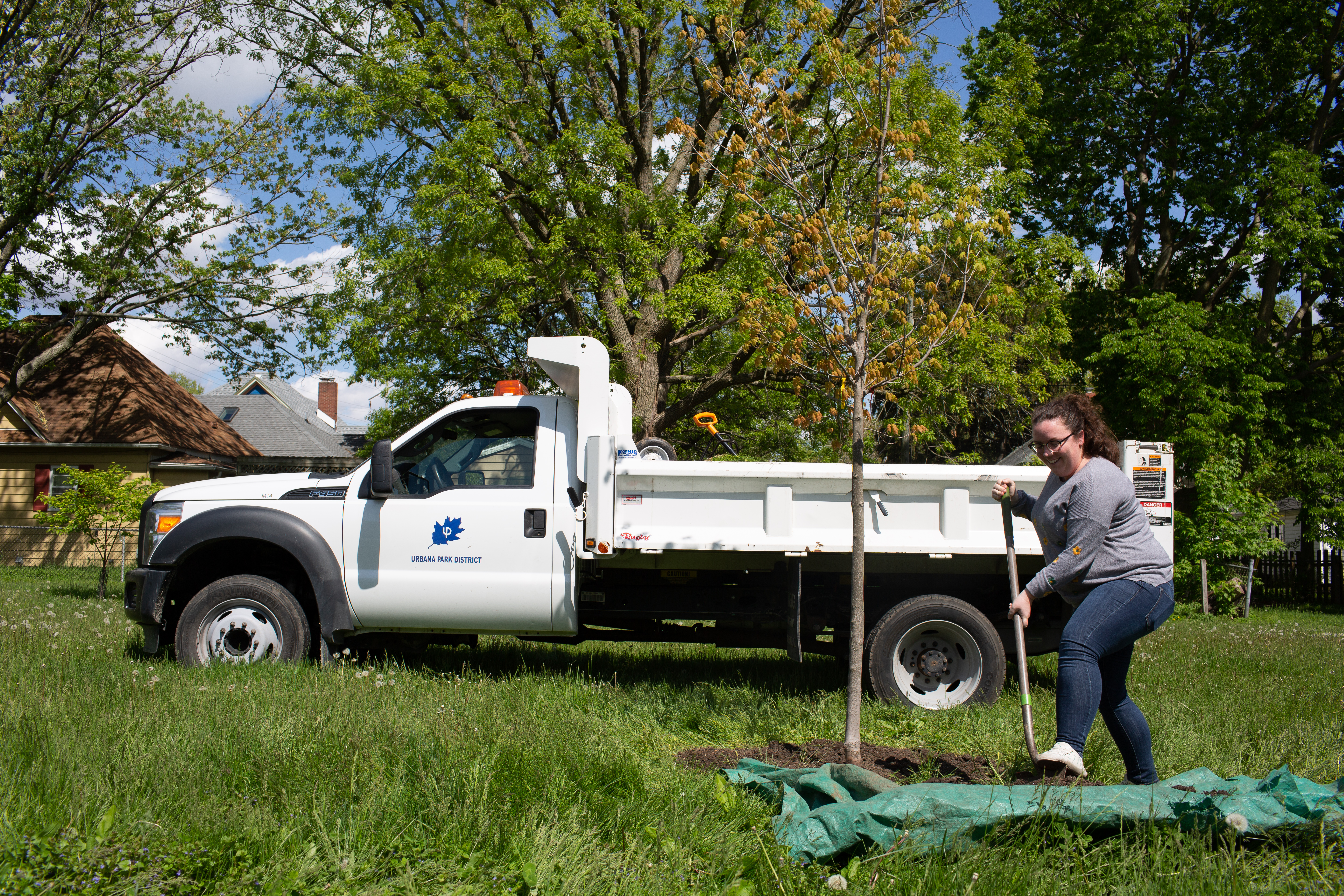RIPE project partners with Paper2Tree to reach local students
This fall, RIPE Postdoctoral Researcher Amanda Cavanagh partnered with the University of Illinois' Paper2Tree program to translate her work from the pages of Science to two fifth grade classes at the Booker T. Washington STEM Academy (BTW) in Champaign, Illinois.

Paper2Tree encourages anyone who publishes a scientific paper to donate a tree to be planted in a local park that will literally grow along with the impact of the authors' scientific research. The program was founded by Mattia Gazzola, an assistant professor in the Department of Mechanical Science and Engineering (MechSE) at Illinois. Gazzola works to ensure that each tree is geo-localized and visualized on a map—along with information about the tree species, associated scientific publication, and authors' university department.
Cavanagh, along with co-author Don Ort, donated a sugar maple tree that was planted on the north side of Victory Park in Urbana to acknowledge their 2019 Science paper: Synthetic glycolate metabolism pathways stimulate crop growth and productivity in the field.

In November 2019, Cavanagh taught two classes at BTW about how plants photosynthesize, or turn sunlight and carbon dioxide into food for us. Cavanagh developed the activities below to simulate a photosynthetic glitch that costs plants a lot of precious energy and to show students how RIPE researchers in the Ort lab have helped alleviate this problem for plants, boosting plant productivity by 20-40 percent.
Details about the classroom activities can be found below. For more information about how to replicate these educational exercises, please email us at ripe@igb.illinois.edu.
Background: The enzyme Rubisco is used in the photosynthetic process to convert carbon dioxide into glucose. However, sometimes it accidentally grabs oxygen instead, which forces the plant to waste energy dealing with this problem via the photorespiration pathway.
Activity 1: Mix a 1:1 ratio of red and blue glass beads (50 each) into a bucket. Have the students reach into the bucket, without looking, and attempt to retrieve a red bead, one at a time. These red beads represent carbon dioxide. Blue beads, which represent oxygen, are discarded in a separate pile. Red beads are placed in a cup, with six red beads per cup. Six beads create one glucose molecule. The first team to create eight glucose molecules (eight cups with six beads each) wins. A timekeeper records how long it takes to create eight glucose molecules. In the next round, mix in extra blue beads to create a 5:1 ratio, which is both harder and more realistic of the ratio of gasses in our atmosphere. Then repeat the activity; discuss why the activity is more difficult and what this means for plants.
Activity 2: Use tape to outline a cell and organelles (chloroplast, mitochondria, peroxisome) on the floor. Repeat Activity 1 with a group of students. Standing in the mitochondria, one student acts as the Rubisco molecule and picks the beads out of a bucket. Red beads are placed in cups (six at a time) held by a few other students to create glucose molecules. Choose several students to act out the motions of photorespiration, helping recycle the harmful byproduct created by oxygen molecules. These students will pass the discarded oxygen molecules (blue beads) one at a time to each other around the chloroplast, through the mitochondria, and around the peroxisome, and back to the mitochondria. Keep going until the students reach a bottleneck and create several glucose molecules. Then create a shorter "alternative pathway" just inside the chloroplast (students stand closer together) and see how much more efficient it is to recycle the oxygen molecules.
